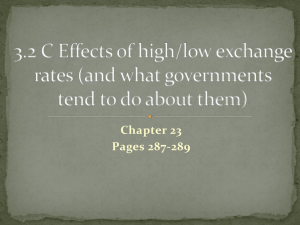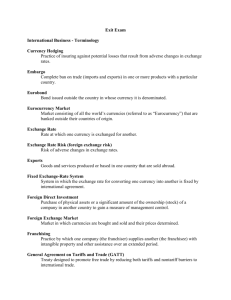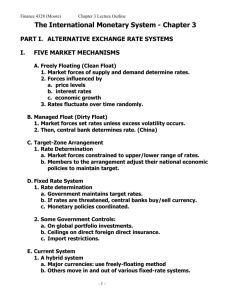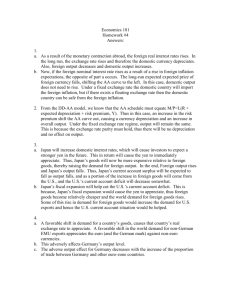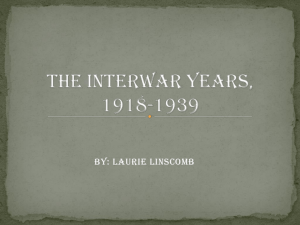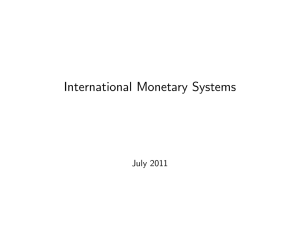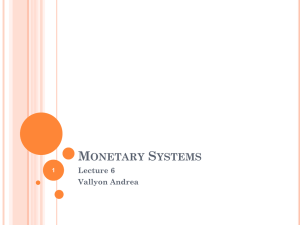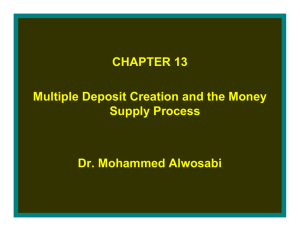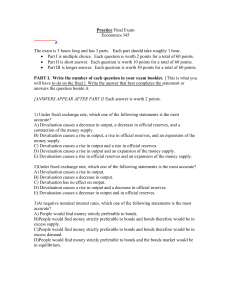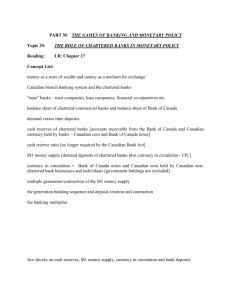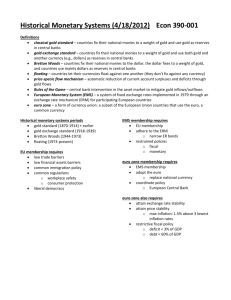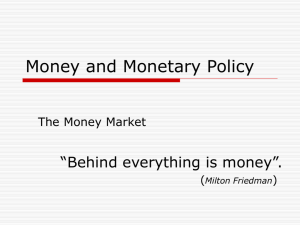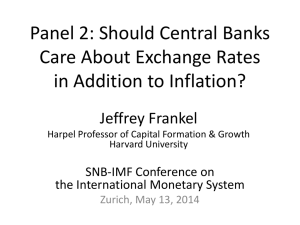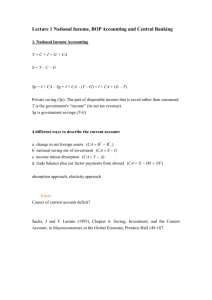The Gold Standard
advertisement
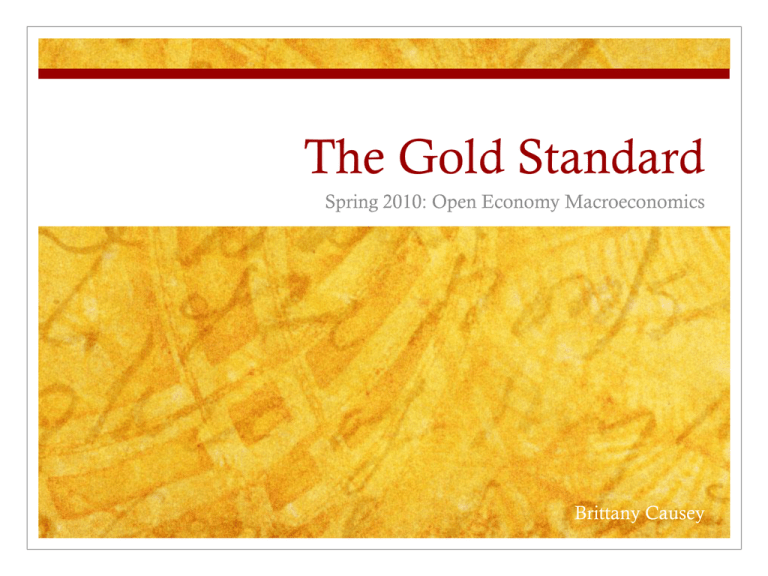
The Gold Standard Spring 2010: Open Economy Macroeconomics Brittany Causey How does a Gold Standard work? How does a Gold Standard Work? Each country fixes the price of its currency in terms of gold by standing ready to trade domestic currency for gold when necessary to defend the official price. Each country is responsible for pegging its currency’s price in terms of the official international reserve asset, gold. Results in fixed exchange rates between all currencies. Monetary Policy Under a Gold Standard Monetary Policy Under a Gold Standard: Example Bank of England increases MS by purchasing domestic assets. Increase in MS decreases Rpound making foreign assets more attractive. Sell pounds to Bank of England for gold, then sell gold to other Central Banks for their currencies. Use new currencies to buy deposits with higher R than Rpound. Bank of England loses reserves because it is forced to buy pounds and sell gold to keep the pound price of gold fixed. Foreign Central Banks gain reserves as they buy gold with their currencies British MS decreases causing Rpound to increase and Foreign MS increases causing R to decrease until R is equal across countries and asset market is in equilibrium. Total world MS increases by amount of Bank of England’s initial domestic asset purchase and R lower throughout the world. Monetary Policy Under a Gold Standard: Summary International monetary adjustment under a gold standard is symmetric Whenever one country is losing reserves and its money supply is decreasing, foreign countries are gaining reserves and seeing their money supplies expand. Benefits of the Gold Standard Benefits of the Gold Standard Money supply cannot grow more rapidly than real money demand Places automatic limits to increases in national price levels through expansionary monetary policy Drawbacks of the Gold Standard Drawbacks of the Gold Standard Undesirable constraints on use of monetary policy to fight unemployment. Tying currency values to gold ensures a stable overall price level only if the relative price of gold and other goods and services is stable. Central Banks cannot increase their holding of international reserves as their economies grow unless there are continual new gold discoveries Countries with potentially large gold production have ability to influence world macroeconomic conditions through market sales of gold. The Bimetallic Standard The Bimetallic Standard Currency based on both gold and silver Could reduce the price level instability resulting from use of just one metal as the standard. The Gold Exchange Standard The Gold Exchange Standard Halfway between the gold standard and a pure reserve currency standard Central Bank’s reserves include gold and currency whose price in terms of gold are fixed, and each central bank fixes its EXRA to a currency with a fixed gold price. Restrains excessive money growth, but allows more flexibility in growth of international reserves


